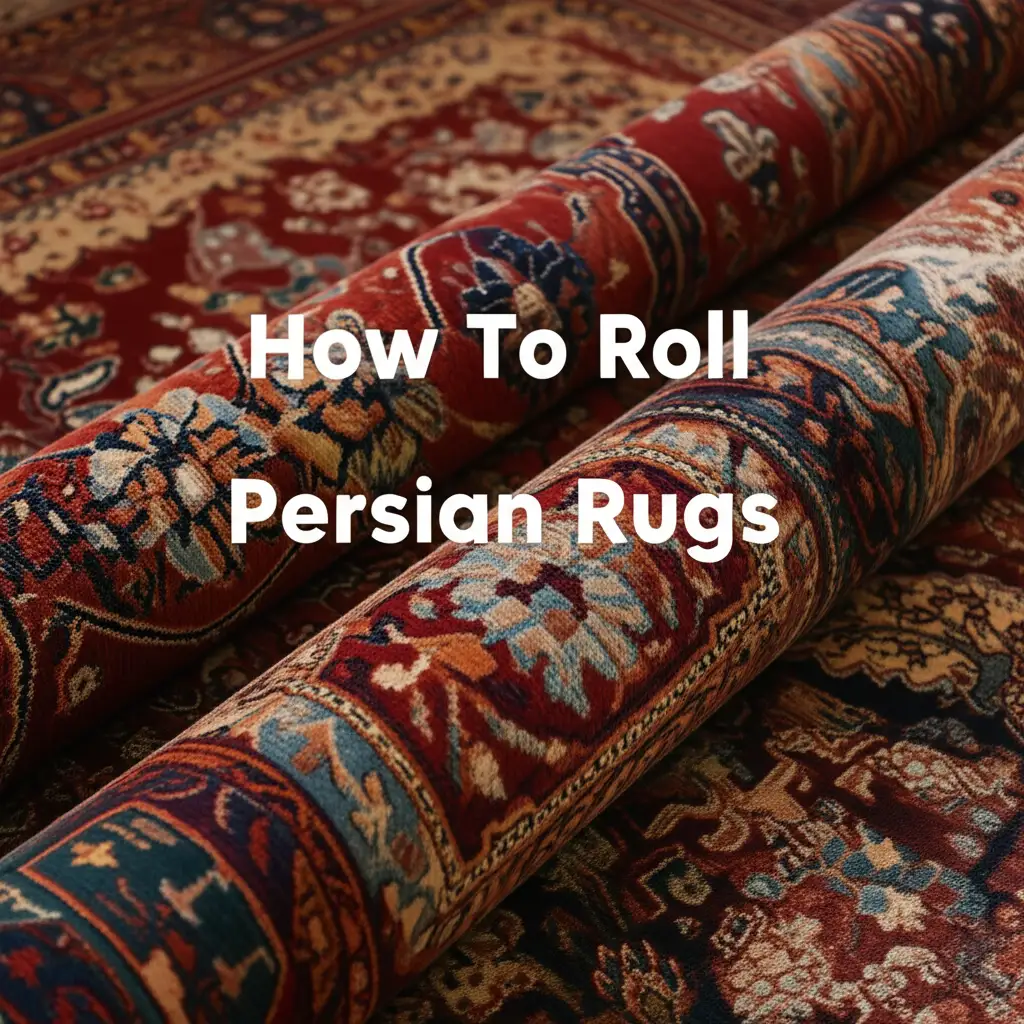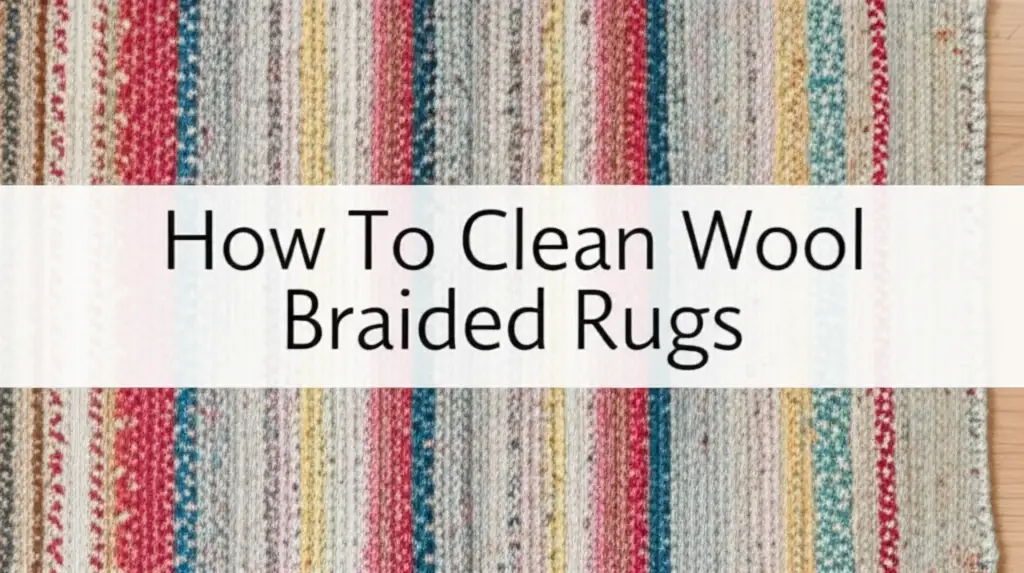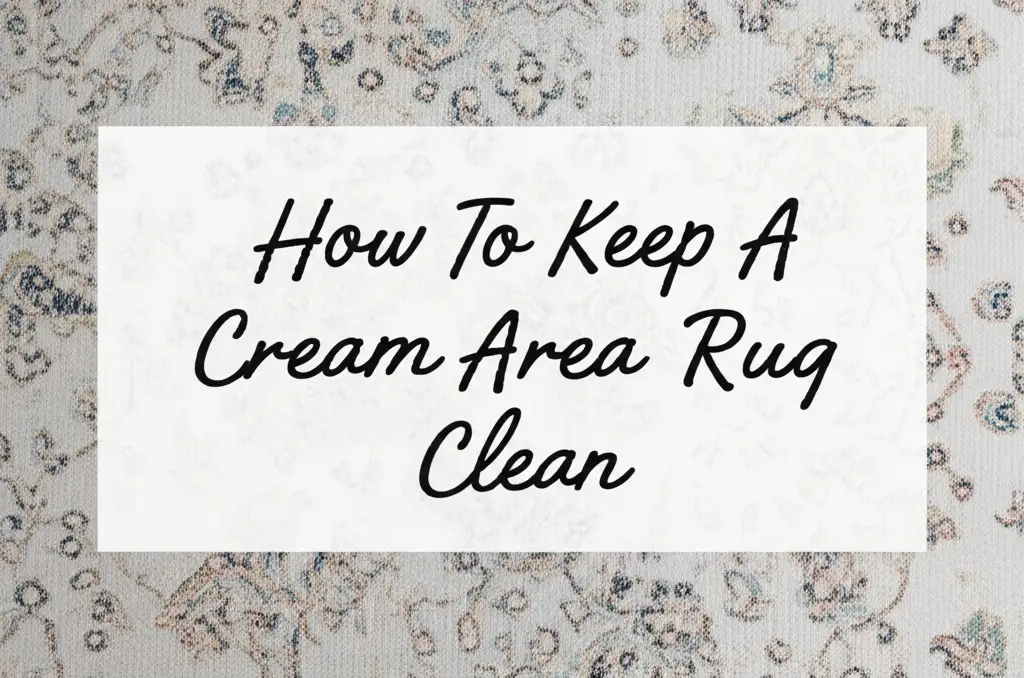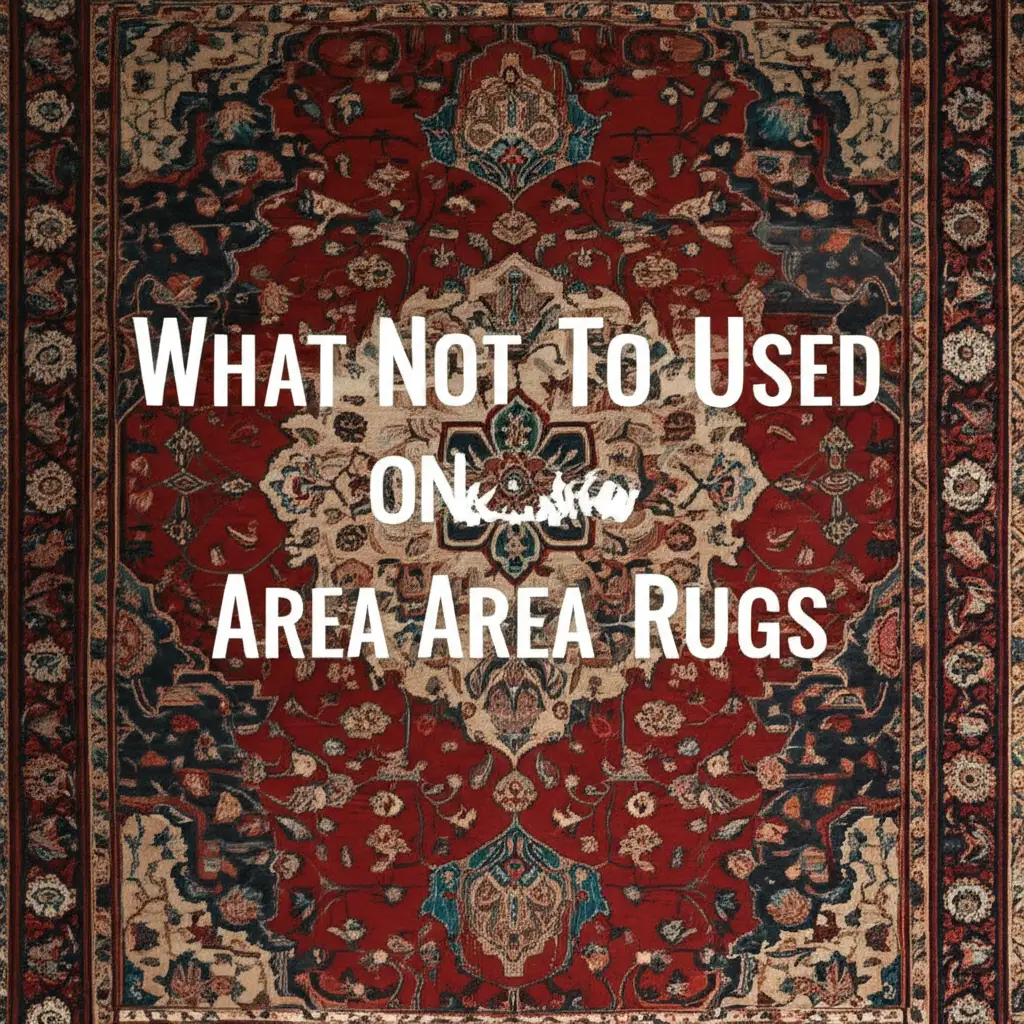· Tessa Winslow · Rug Care · 14 min read
How To Roll Persian Rugs

Rolling Persian Rugs: A Gentle Guide
Persian rugs are true works of art. They add beauty and warmth to any home. Knowing how to roll Persian rugs correctly is very important. This simple skill protects your valuable investment. Proper rolling prevents creases, pile damage, and wear. It also makes moving or storing your rug much easier. We will show you the right steps to roll your Persian rug. This guide covers everything from preparation to long-term storage tips. You will learn how to keep your rug beautiful for many years.
Takeaway:
- Always roll a Persian rug from one end to the other, never fold it.
- Ensure the rug is clean and dry before rolling it for storage.
- Roll with the pile facing outwards to prevent damage to the fibers.
- Use breathable materials like Tyvek for wrapping and cotton ties for securing.
- Store the rolled rug in a cool, dry, dark place away from pests and moisture.
How do you properly roll a Persian rug?
To properly roll a Persian rug, start with a clean, flat rug. Place it pile-side up. Begin rolling tightly from one end, keeping the roll even and firm. Ensure the pile faces outward as you roll. Secure the rolled rug with cotton ties and wrap it in a breathable material for protection.
Why Proper Rolling Matters for Your Persian Rug
Learning how to roll Persian rugs properly is not just about convenience. It is about protecting a valuable piece of art. These rugs are often passed down through generations. They need special care to maintain their beauty and value. Incorrect rolling or folding can cause permanent damage. This damage includes creases, broken fibers, and a distorted shape.
Protecting Your Investment
A Persian rug is often a significant investment. Proper rolling helps preserve its structure and appearance. When you roll a rug correctly, you protect its delicate fibers. This helps the rug keep its original shape and colors. It ensures your rug remains a valuable asset.
Avoiding Damage
Folding a Persian rug creates sharp creases. These creases can break the rug’s foundation threads. This leads to permanent damage over time. Rolling prevents these harsh lines. It keeps the rug’s structure intact. Rolling also stops the pile from getting crushed or matted.
Preparing for Storage or Moving
You might need to store your Persian rug or move it to a new home. Correct rolling makes these tasks much easier and safer. A properly rolled rug is compact and easy to handle. It also stays protected during transport. This method keeps your rug safe from dirt and accidental damage. Many people wonder if their rug is truly Persian. Knowing how do you know if a rug is Persian helps you understand its unique care needs.
Essential Tools and Preparation Before Rolling
Before you start to roll Persian rugs, gather the right tools. Proper preparation is key to a successful and safe process. Taking these steps ensures your rug is ready for rolling. It also protects it during storage or transport. Do not skip these crucial initial stages.
Necessary Supplies
You will need a few simple items. First, have a clean, clear space. You also need a vacuum cleaner or soft brush. For securing the rug, use cotton twill tape or fabric strips. Avoid string or rope, as they can cut into the rug. If storing, get a breathable fabric wrap like Tyvek or a cotton sheet. Never use plastic, which traps moisture.
Pre-Rolling Cleaning Steps
Cleaning your rug thoroughly is very important before rolling it. Dust and dirt can harm fibers over time. Start by vacuuming the rug gently. Vacuum both the front and the back. This removes loose dirt and debris. If you need a deeper clean, consider professional help. For general maintenance, remember that are you only suppose to vacuum rugs is a common question, and gentle vacuuming is often enough for surface dirt.
After vacuuming, inspect the rug for any stains or spills. Spot clean these areas immediately. Make sure the rug is completely dry before rolling. Any moisture can lead to mildew or mold growth. This can ruin your beautiful rug. If your rug needs more than a quick vacuum, learning how to clean area rugs inside can be helpful.
Clear Your Space
Find a large, flat, clean area. This could be a hallway, a spacious room, or even an outdoor patio on a dry day. You need enough space to fully unroll the rug. Clear away any furniture or obstacles. This ensures you have room to maneuver the rug. A clean surface prevents new dirt from getting onto your freshly cleaned rug. This step prepares you for a smooth rolling process.
Step-by-Step Guide: How to Roll Persian Rugs Correctly
Rolling a Persian rug properly requires a specific method. Follow these steps carefully to ensure your rug is protected. The goal is a tight, even roll that prevents damage. This process ensures your rug stays in excellent condition.
Laying the Rug Flat
First, lay the rug completely flat. Smooth out any wrinkles or bumps. Make sure the rug is right-side up. This means the pile (the soft, fuzzy surface) should be facing you. Having a flat, smooth surface is important for an even roll. If your rug has been folded, give it time to relax and flatten out. You might need someone to help hold one end as you unroll it.
Starting the Roll (Pile In vs. Pile Out)
This is a critical decision: should the pile face in or out? For Persian rugs, it is best to roll with the pile facing outward. This means the soft surface is on the outside of the roll. Why is this important? The foundation of a Persian rug, which is its back, is stiffer than the pile. Rolling with the pile out puts less stress on the rug’s foundation. It helps prevent cracking or damage to the base. It also protects the delicate pile fibers. Begin rolling from one end, away from the fringes.
Keeping It Tight and Even
Start rolling slowly and tightly. Try to keep the roll as even as possible across the entire width. If the roll starts to cone or become uneven, stop. Unroll a little bit and adjust. Apply consistent pressure as you roll. A loose roll takes up more space and offers less protection. It is also more prone to wrinkles. For larger rugs, having a second person can make this step much easier. One person can guide the roll, while the other keeps it tight and straight. Keep rolling until the entire rug is a firm cylinder.
Securing and Protecting Your Rolled Rug
Once you learn how to roll Persian rugs, the next step is securing and protecting them. This ensures the rug stays in its tightly rolled state. It also adds a layer of defense against dust, pests, and moisture. Proper securing and wrapping are key for both moving and long-term storage.
Tying the Roll Securely
After rolling your rug, secure it with ties. Use strong cotton twill tape or fabric strips. Cut several pieces long enough to go around the roll and tie a knot. Place ties at both ends, about 6-12 inches from the edge. Add one or two more ties in the middle for longer rugs. Tighten the ties enough to hold the roll firm. Avoid using rope, wire, or thin string. These can leave marks or even cut into the rug fibers. Soft, wide strips are much safer for the rug’s delicate structure.
Wrapping for Protection
Wrapping your rolled rug provides an extra layer of protection. It shields the rug from dust, dirt, and light. Use a breathable material for wrapping. Tyvek is a popular choice because it is breathable but water-resistant. A clean, old cotton sheet also works well. The material must allow air to circulate. Do not use plastic sheets or bags. Plastic traps moisture, which can lead to mold, mildew, or dry rot. This can severely damage your rug. Wrap the entire rug, ensuring no part is exposed. Secure the wrap with more cotton ties or gentle tape.
Pest Prevention Tips
Pests, especially moths and carpet beetles, love wool rugs. They can cause significant damage during storage. Before wrapping, ensure your rug is very clean. Consider using natural moth repellents. Cedar blocks or lavender sachets can help. Place these near, but not directly touching, the rug. Avoid mothballs, as their chemicals can harm rug fibers and leave a strong odor. When cleaning your rugs, you should also be mindful of pests. Knowing how to get rid of moths in wool rugs is essential for long-term care. Regularly check your stored rugs if they are kept for extended periods.
Storing Your Rolled Persian Rug Safely
After you correctly roll Persian rugs, proper storage is paramount. The storage environment directly affects your rug’s longevity and condition. A well-chosen storage spot protects your rug from potential harm. It ensures that when you unroll it, it looks as beautiful as ever.
Choosing the Right Storage Spot
Select a storage area that is cool, dry, and dark. Basements and attics are often not ideal. They tend to have fluctuating temperatures and humidity levels. These conditions can encourage mold, mildew, or pest activity. Instead, choose a spare closet, under a bed, or a dedicated storage unit. Make sure the area is free from direct sunlight. Sunlight can fade the rug’s vibrant colors over time. Also, keep the rug off the floor if possible. You can place it on wooden pallets or blocks to allow air circulation.
Ideal Storage Conditions
The ideal humidity level for rug storage is between 40% and 60%. Keep the temperature consistent, around 60-75°F (15-24°C). Avoid extreme temperature changes, which can stress the rug fibers. Good air circulation is also important. This helps prevent musty odors and moisture buildup. If storing in a humid climate, a dehumidifier in the storage area can be beneficial. Remember to check on your rug periodically.
Periodic Checks
Even with proper preparation, it is wise to check your stored rug now and then. Every 6-12 months, unroll the rug slightly. Inspect it for any signs of pests, mold, or damage. This gives you a chance to address any issues early. If you find any problems, take action immediately. Re-roll the rug carefully after inspection. This simple step can save your rug from serious, irreversible harm. Remember, proper cleaning before storage is crucial. Sometimes, you need professional help. For those living in the Fort Worth area, you might wonder where to get Persian rugs cleaned in Fort Worth, TX.
Common Mistakes to Avoid When Rolling Rugs
Learning how to roll Persian rugs effectively means knowing what not to do. Some common mistakes can seriously harm your rug. Avoiding these pitfalls will ensure your rug remains in prime condition. Pay close attention to these warnings.
Do Not Fold Your Rug
This is the biggest mistake people make. Folding a Persian rug creates permanent creases. The foundation of these rugs is hand-knotted and very firm. When you fold it, you break the warp and weft threads. This causes lasting damage. It weakens the rug’s structure. Always roll your rug, never fold it, for any duration of storage or transport.
Avoid Rolling a Damp Rug
Never roll a rug that is even slightly damp. Moisture trapped inside a rolled rug is a recipe for disaster. It creates the perfect environment for mold and mildew. These fungi can grow quickly and cause a musty smell. They can also rot the rug’s fibers. Make sure your rug is completely dry. Let it air out for a day or two after cleaning. Ensure no humidity or moisture is present before you begin to roll Persian rugs. If you have cleaned your wool rug, ensure it is completely dry. If you are cleaning specifically wool, consider how to care for them. For example, knowing how to clean wool braided rugs can offer insights into proper drying techniques.
Wrong Rolling Direction
We discussed this earlier, but it is worth repeating. Always roll Persian rugs with the pile facing out. Rolling pile-in stresses the rug’s foundation. It can cause cracks in the backing over time. The pile-out method protects both the foundation and the delicate top fibers. It helps the rug maintain its shape and integrity. Double-check your rolling direction before you commit.
When to Call a Professional for Your Rug
While rolling a Persian rug seems straightforward, some situations call for expert help. Knowing when to involve a professional can save your rug from damage. Professionals have the tools and experience for specific tasks. Do not hesitate to seek their assistance if needed.
Large or Heavy Rugs
Very large or heavy Persian rugs can be hard to roll alone. They require a lot of strength and coordination. Trying to handle them by yourself can lead to injury or rug damage. Professionals have equipment and multiple team members. They can manage large rugs safely and efficiently. If your rug is too big to easily handle, get help.
Delicate or Antique Rugs
Some Persian rugs are extremely old or very delicate. They might have weakened fibers or fragile areas. Rolling these rugs improperly can cause irreversible damage. A professional rug specialist understands how to handle antique textiles. They use special techniques to protect fragile rugs. If you have a cherished family heirloom or a very old rug, consider professional rolling and storage services.
Cleaning and Repair Needs
Before storing, a rug must be clean. If your rug has deep stains, odors, or pest infestations, professional cleaning is essential. Regular vacuuming is not enough for serious issues. Professionals have specialized cleaning methods that are safe for Persian rugs. They can also repair any existing damage before rolling. This ensures your rug is in its best condition for storage. Professional cleaning extends your rug’s life. It prevents further damage during long-term storage.
FAQ Section
How long can a Persian rug stay rolled up?
A Persian rug can stay rolled up for a long time, even years, if stored correctly. The key is proper preparation: ensure it is clean, completely dry, and rolled with the pile facing out. Store it in a cool, dry, dark, and pest-free environment. Periodic checks are still recommended to ensure its condition.
Should I roll or fold a Persian rug for moving?
You should always roll a Persian rug for moving. Never fold it. Folding creates sharp creases that can break the rug’s foundation threads, leading to permanent damage. Rolling protects the rug’s structure, keeps it compact, and makes it easier to transport safely.
Can I store a Persian rug in a plastic bag?
No, you should never store a Persian rug in a plastic bag or any non-breathable material. Plastic traps moisture, which can lead to mold, mildew, dry rot, and unpleasant odors. Always use breathable materials like Tyvek, cotton sheets, or specially designed rug bags that allow air circulation.
How do I prepare a Persian rug for long-term storage?
Prepare a Persian rug for long-term storage by first cleaning it thoroughly and ensuring it is completely dry. Roll it tightly with the pile facing outward. Secure the roll with cotton ties. Wrap it in a breathable material like Tyvek. Store it horizontally in a cool, dry, dark, and pest-controlled area.
What causes damage to a rolled Persian rug?
Damage to a rolled Persian rug often comes from folding instead of rolling, rolling a damp rug, or storing it in an improper environment. High humidity, extreme temperatures, direct sunlight, and pest infestations (like moths) can also cause significant damage over time to a rolled rug.
How often should I unroll a stored Persian rug?
For long-term storage, it is a good idea to unroll your Persian rug slightly every 6 to 12 months. This allows you to inspect it for any signs of mold, pests, or damage. It also helps to air out the rug slightly, ensuring no moisture or odors are developing.
Conclusion
Rolling a Persian rug correctly is a vital skill for any rug owner. It protects your cherished investment, prevents damage, and makes handling much easier. We have covered the critical steps: preparing your rug, knowing how to roll Persian rugs with the pile out, securing it properly, and choosing the right storage environment. By following these guidelines, you can ensure your Persian rug stays beautiful for many generations. Remember to avoid common mistakes like folding or storing damp rugs. Your rug deserves the best care. Protect its beauty and value by using these simple yet effective techniques. If you have any doubts, consider consulting a professional rug specialist for peace of mind.





